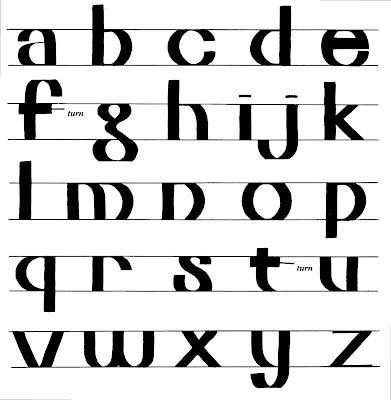Calligraphers might have it worse; it could be a prime number. But our alphabet does pose a nagging problem; how to distribute those 26 letters in an orderly but interesting array?
I've tried various grids:
2 x 13, or 13 x 2
3 x 27 or 27 x 3 minus 1
4 x 6 plus two
5 x 5 plus one (see April 7)
This works if you shoehorn I and J into the same box. It makes sense, sort of, because J was represented by I for centuries.
Uneven lines (see May 20)
You can use any distribution that works for your design. The layout illustrated here fits the letters roughly into 4 lines. Starting with 7 letters in the first two lines, I let the O take up the room of two letters in the third line, and allowed the last line to expand so much that Z got a line to itself. I exaggerated the swash of G at upper right to balance all that drama in the lower left.
By the way, note how the letters seem heavier when you reverse them to read white on black.
I've tried various grids:
2 x 13, or 13 x 2
3 x 27 or 27 x 3 minus 1
4 x 6 plus two
5 x 5 plus one (see April 7)
This works if you shoehorn I and J into the same box. It makes sense, sort of, because J was represented by I for centuries.
Uneven lines (see May 20)
You can use any distribution that works for your design. The layout illustrated here fits the letters roughly into 4 lines. Starting with 7 letters in the first two lines, I let the O take up the room of two letters in the third line, and allowed the last line to expand so much that Z got a line to itself. I exaggerated the swash of G at upper right to balance all that drama in the lower left.
By the way, note how the letters seem heavier when you reverse them to read white on black.














































